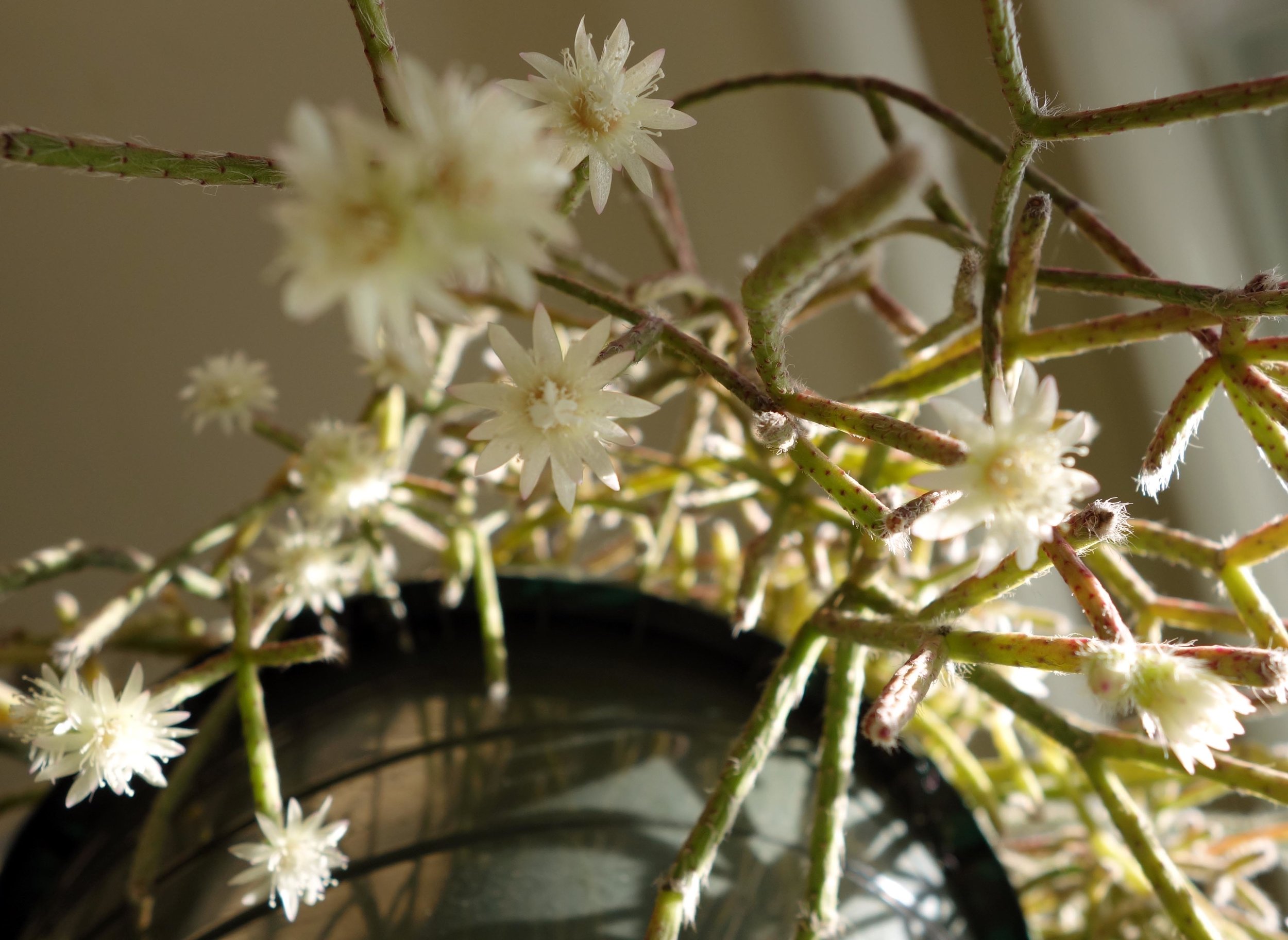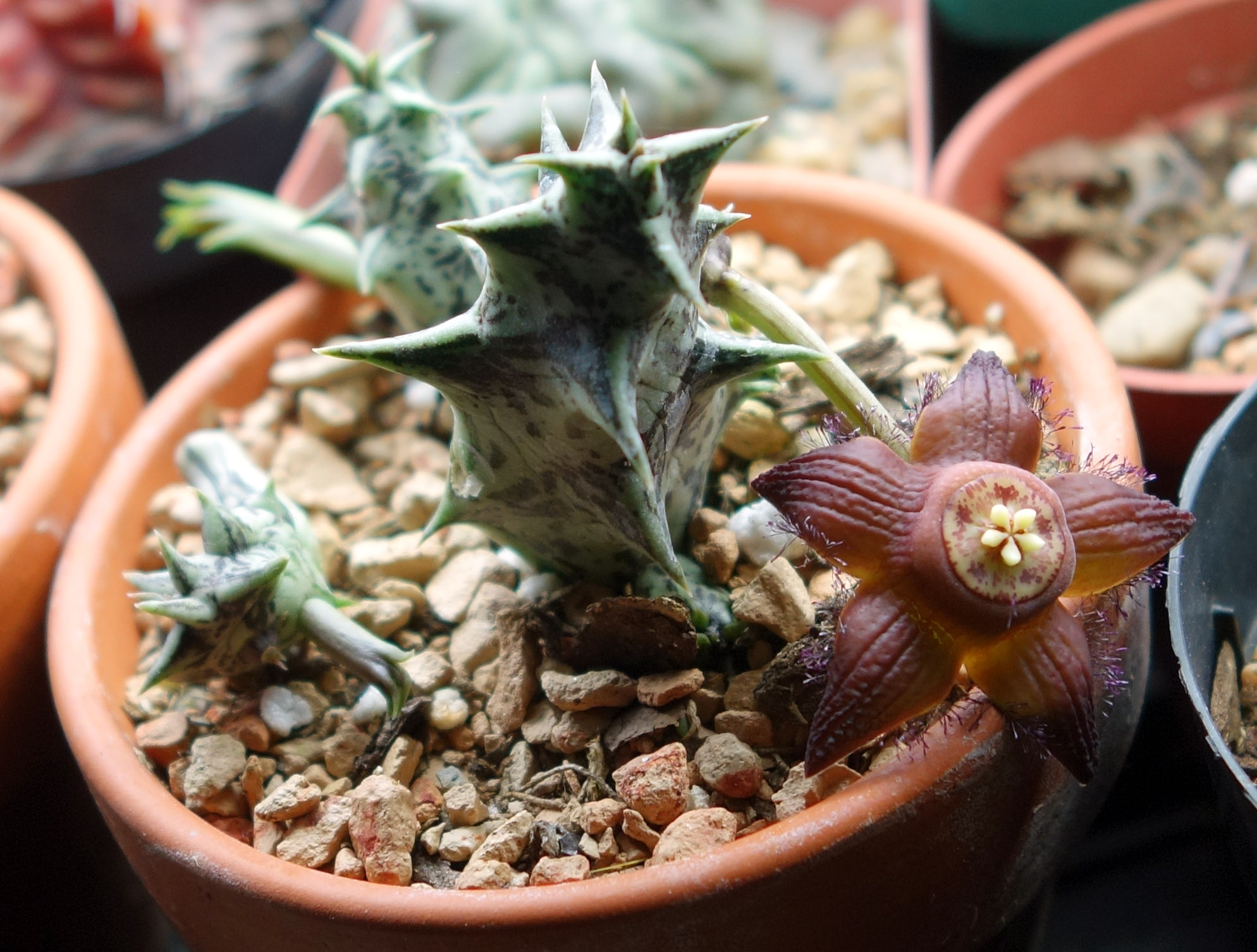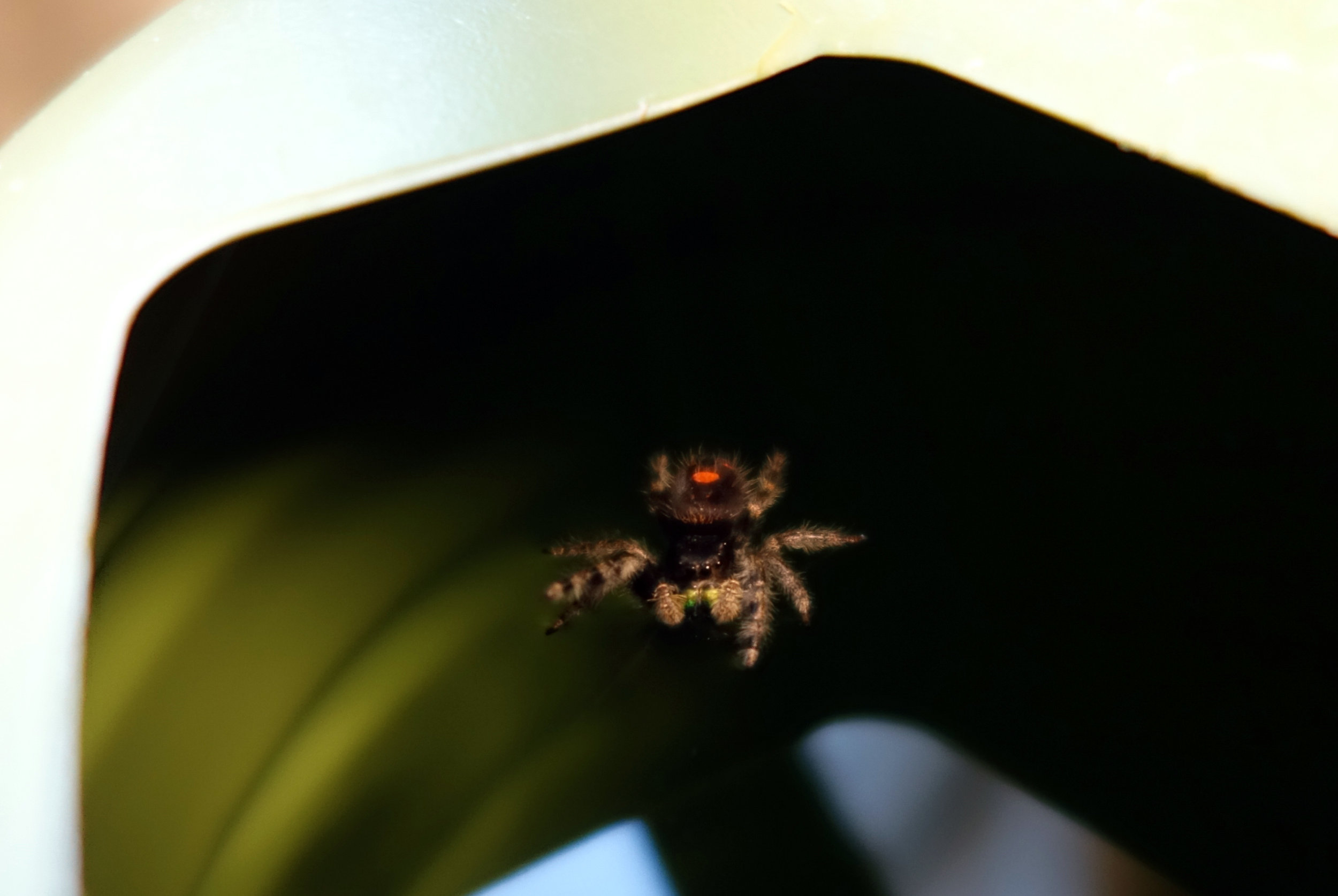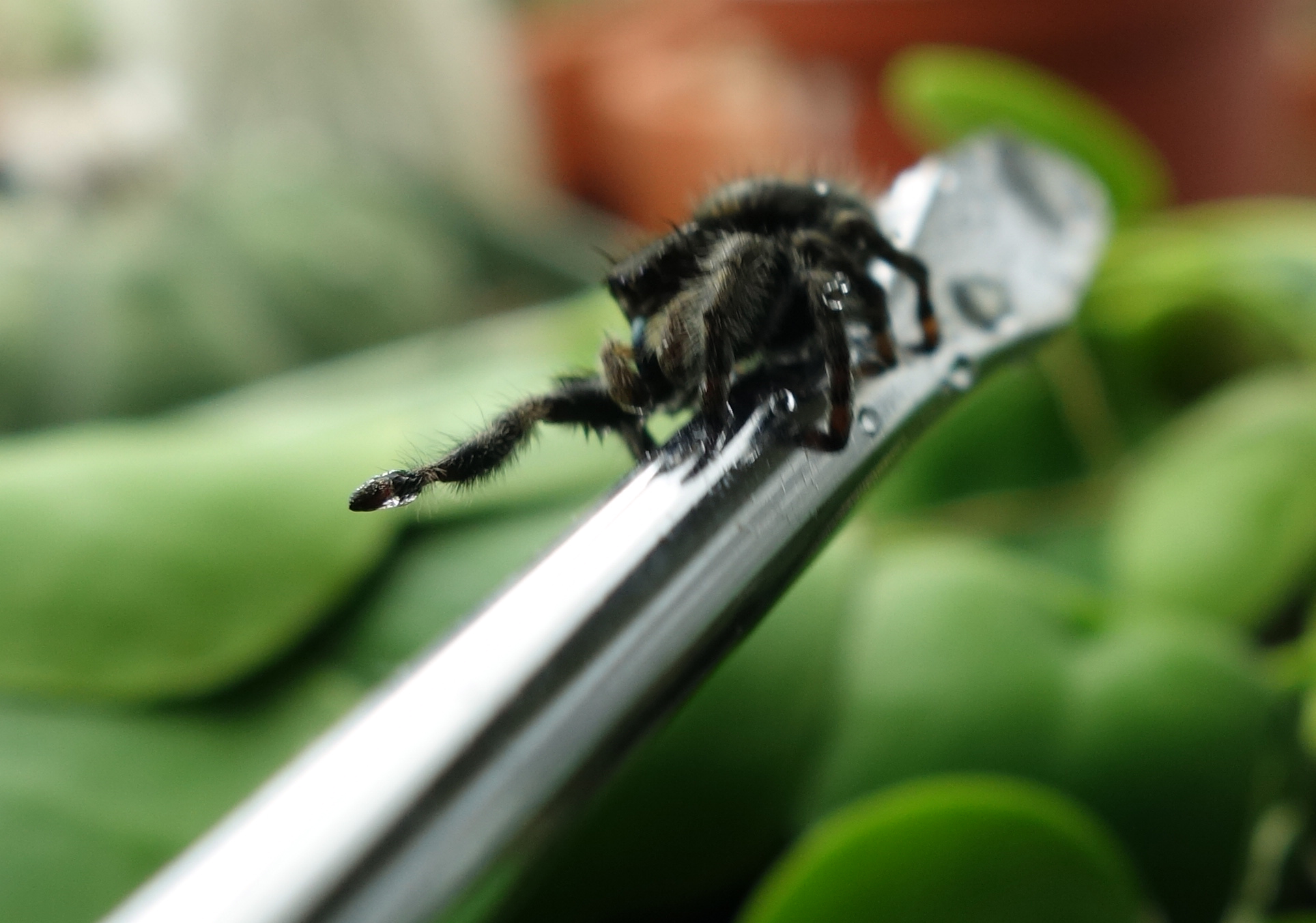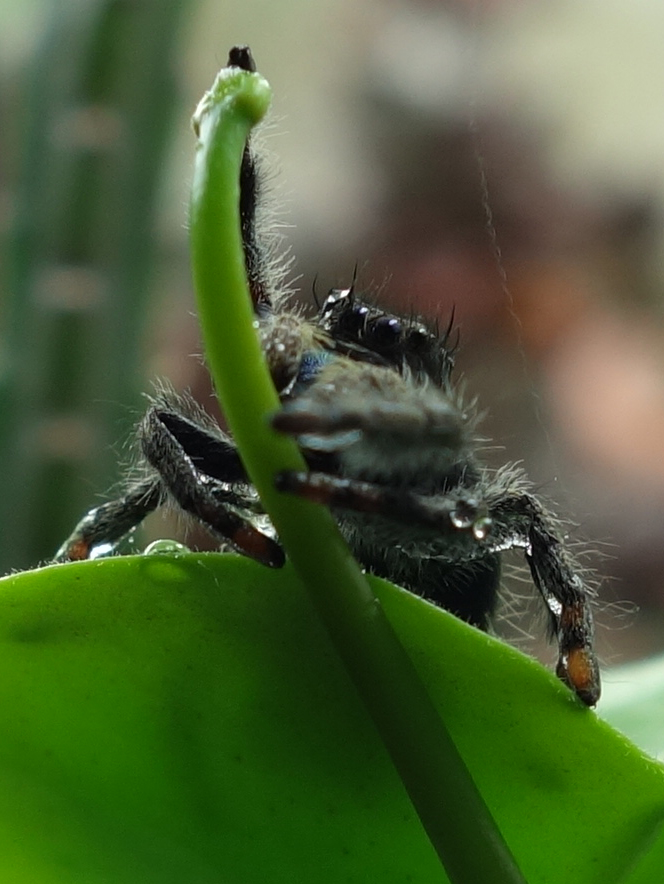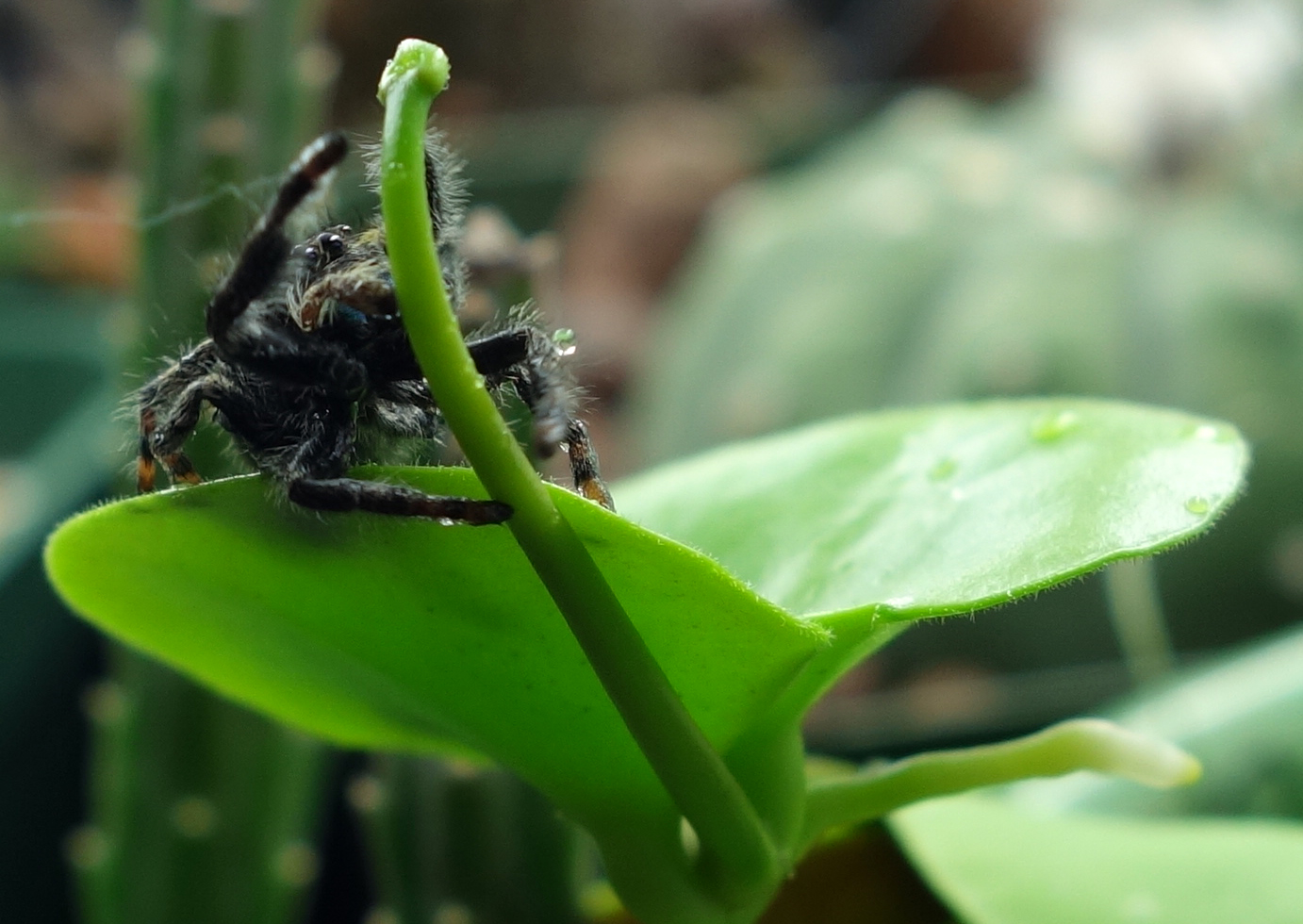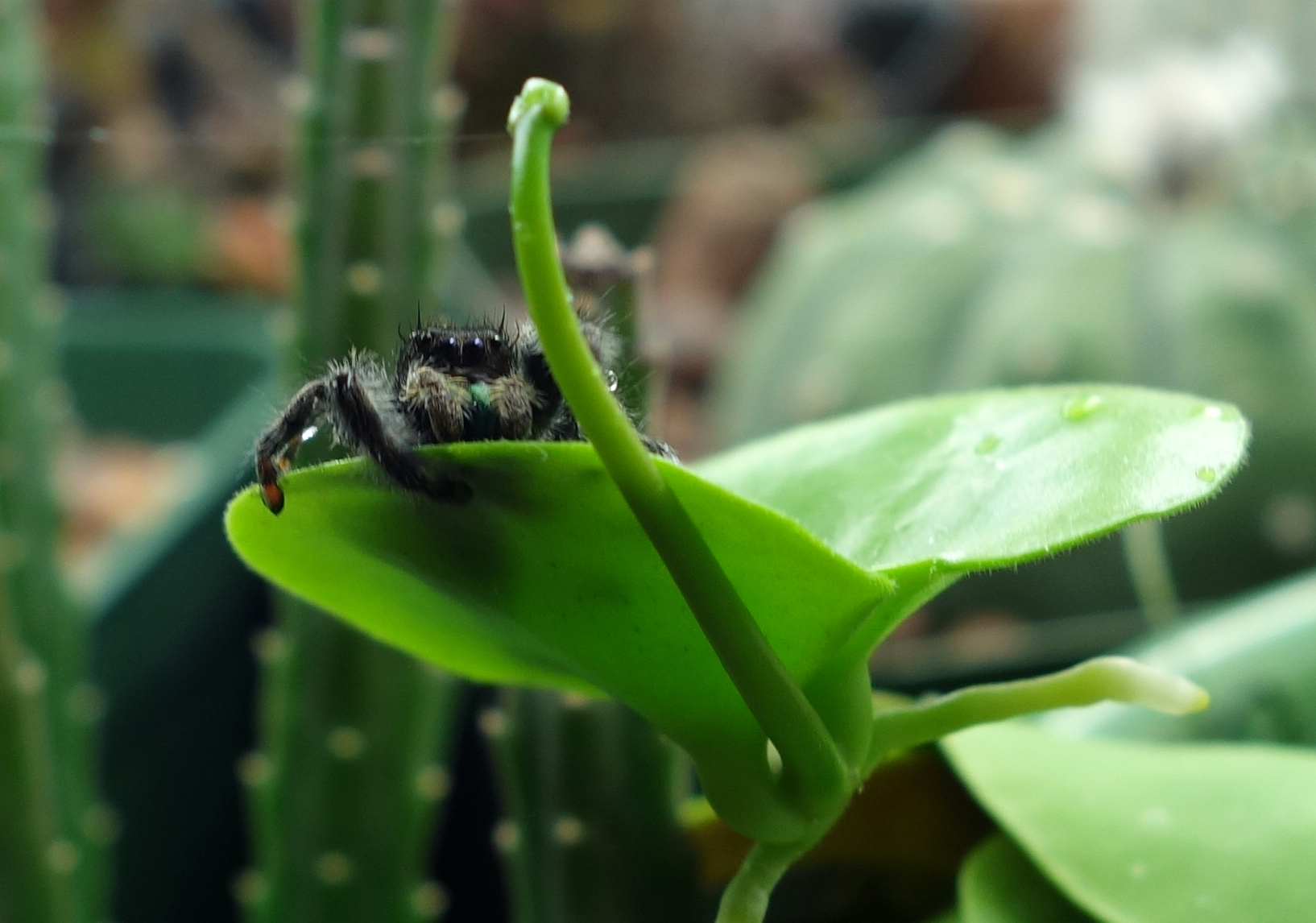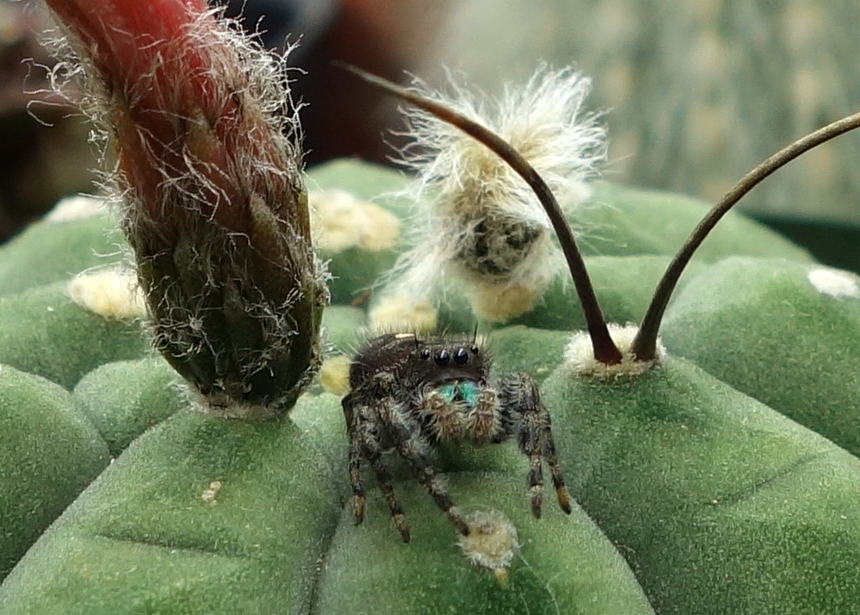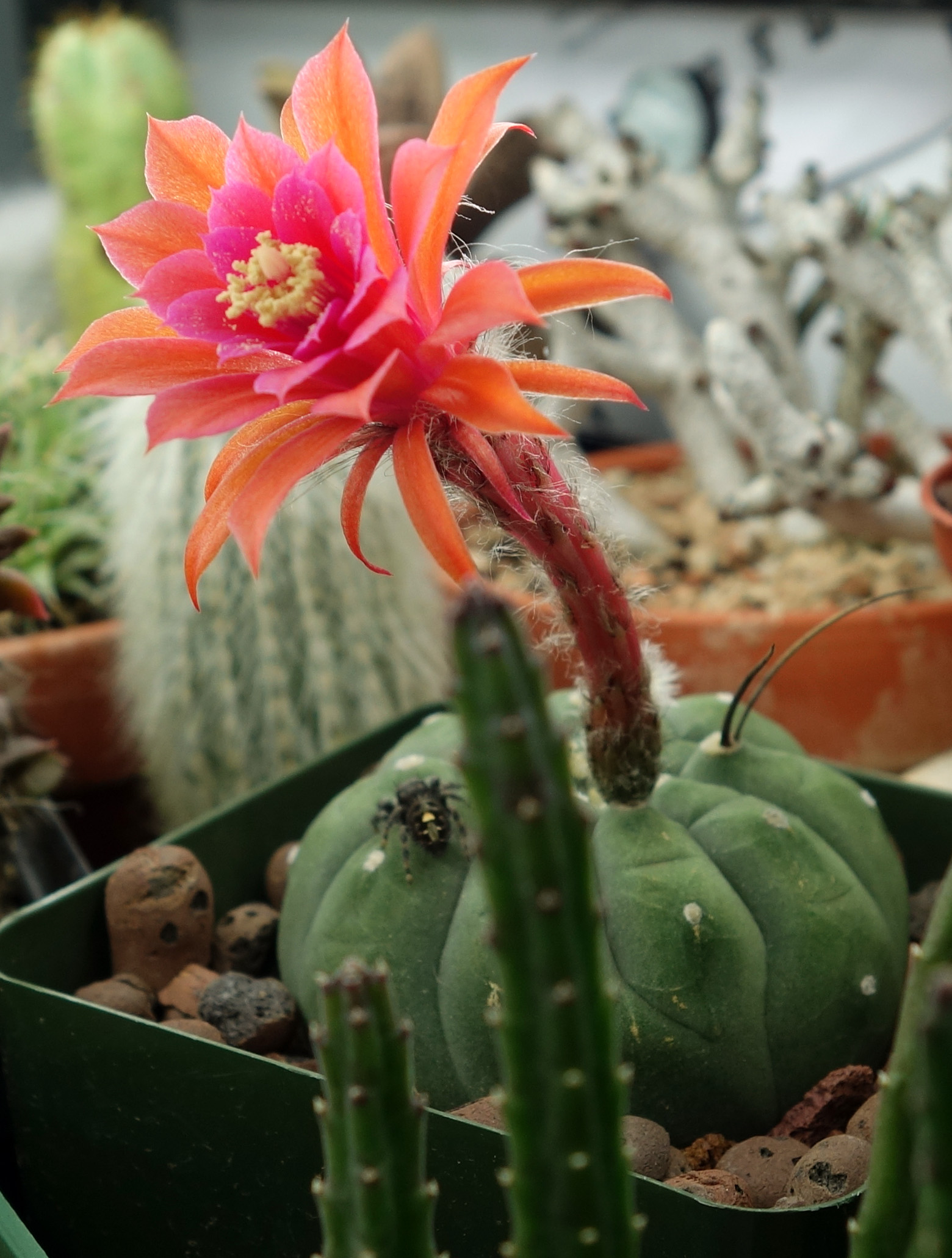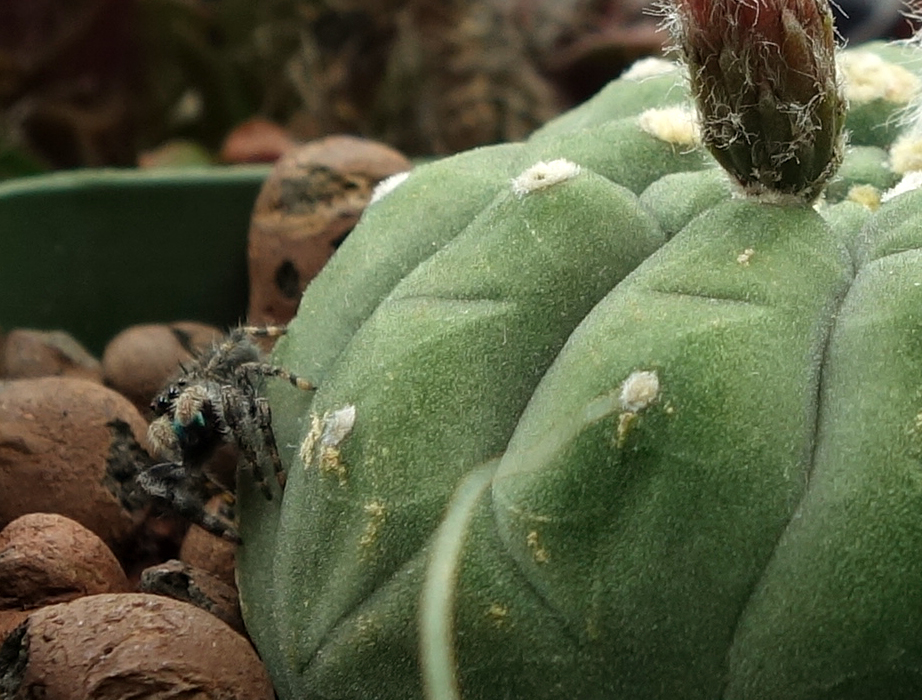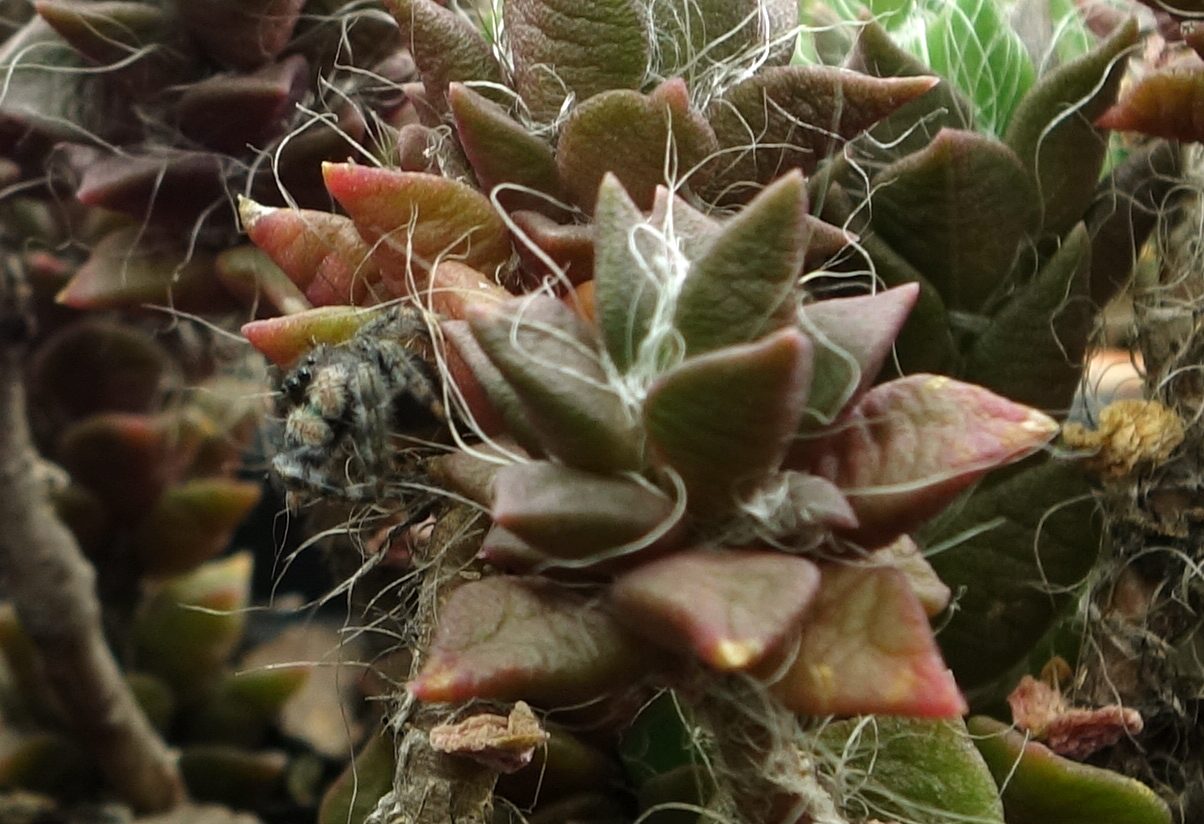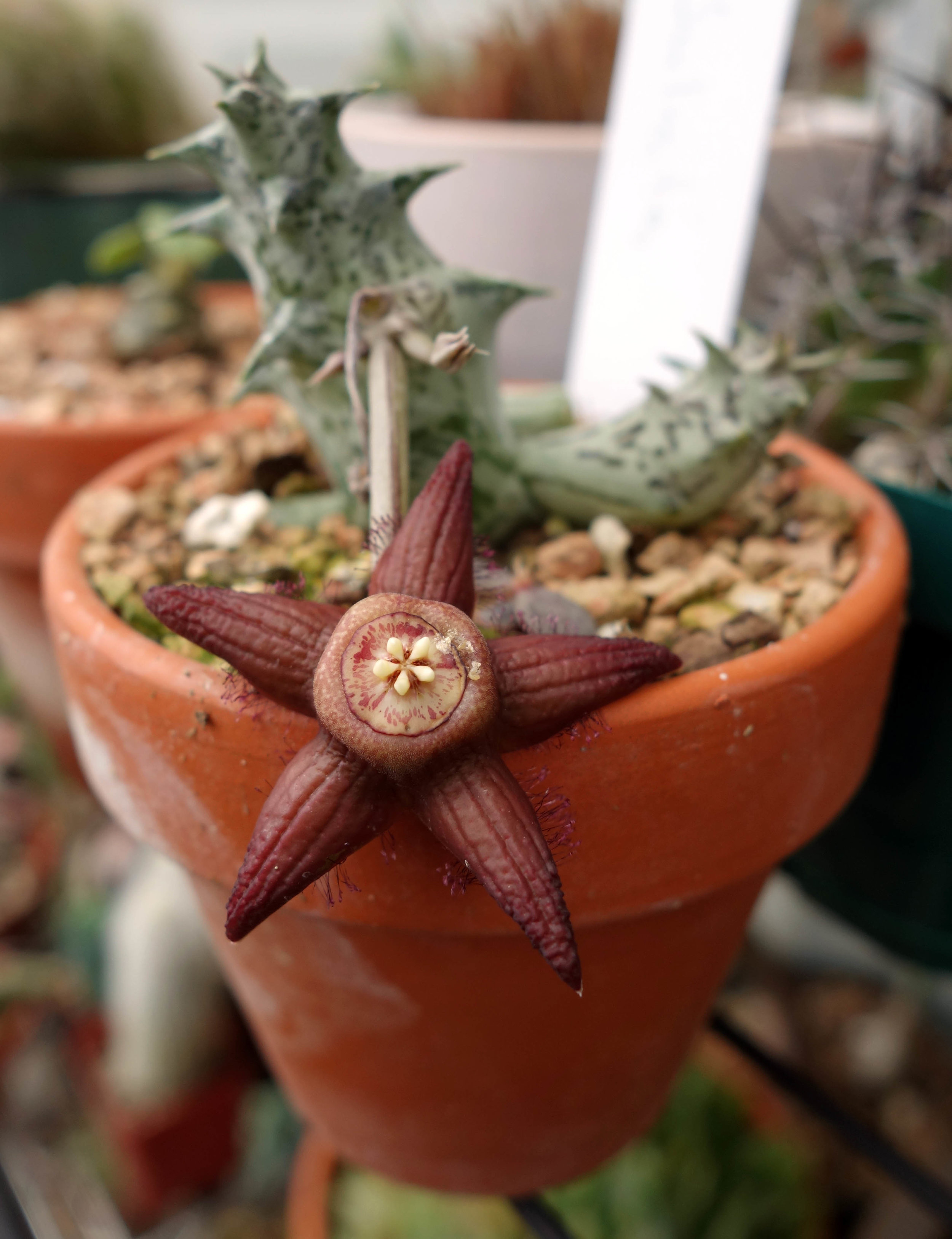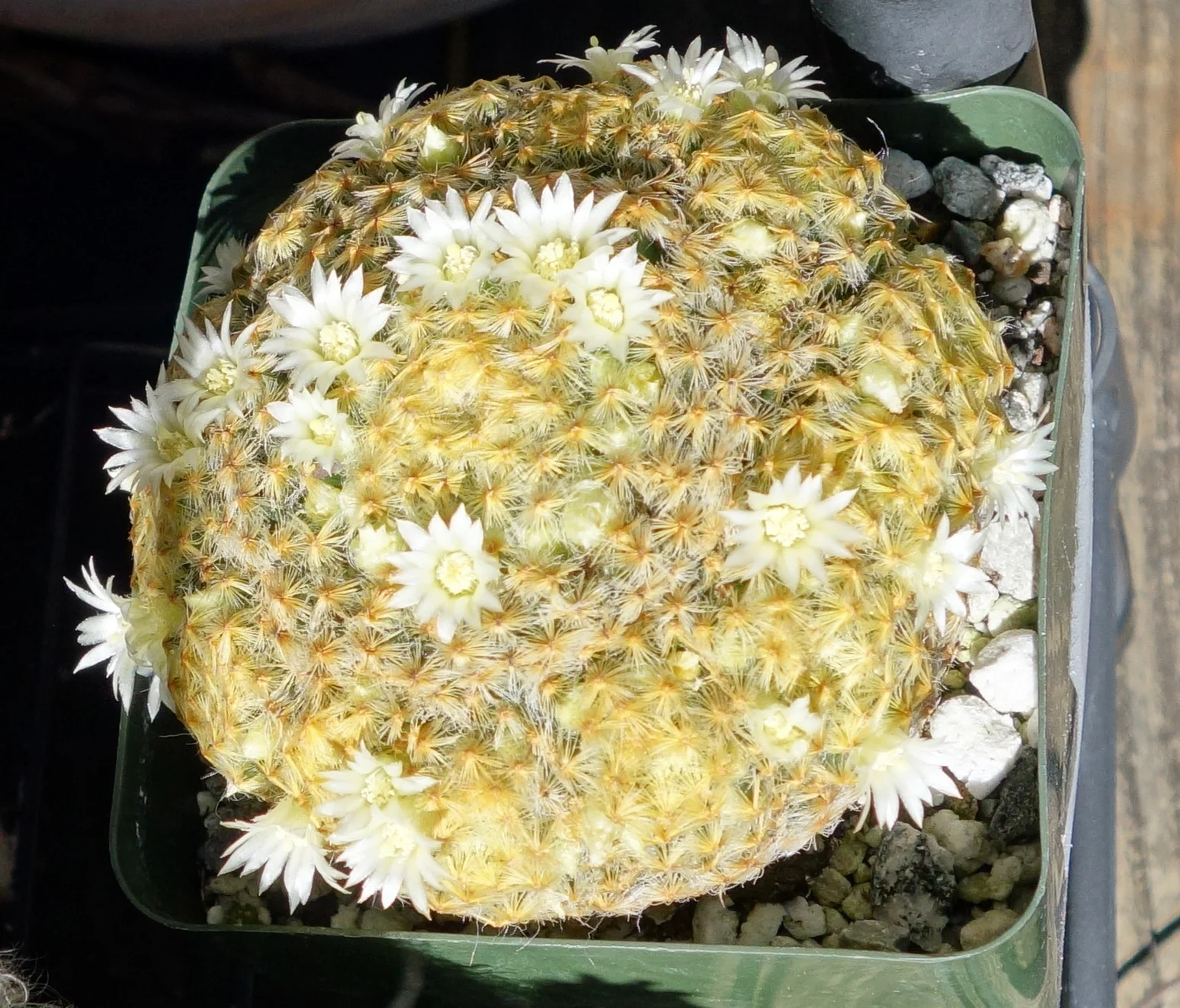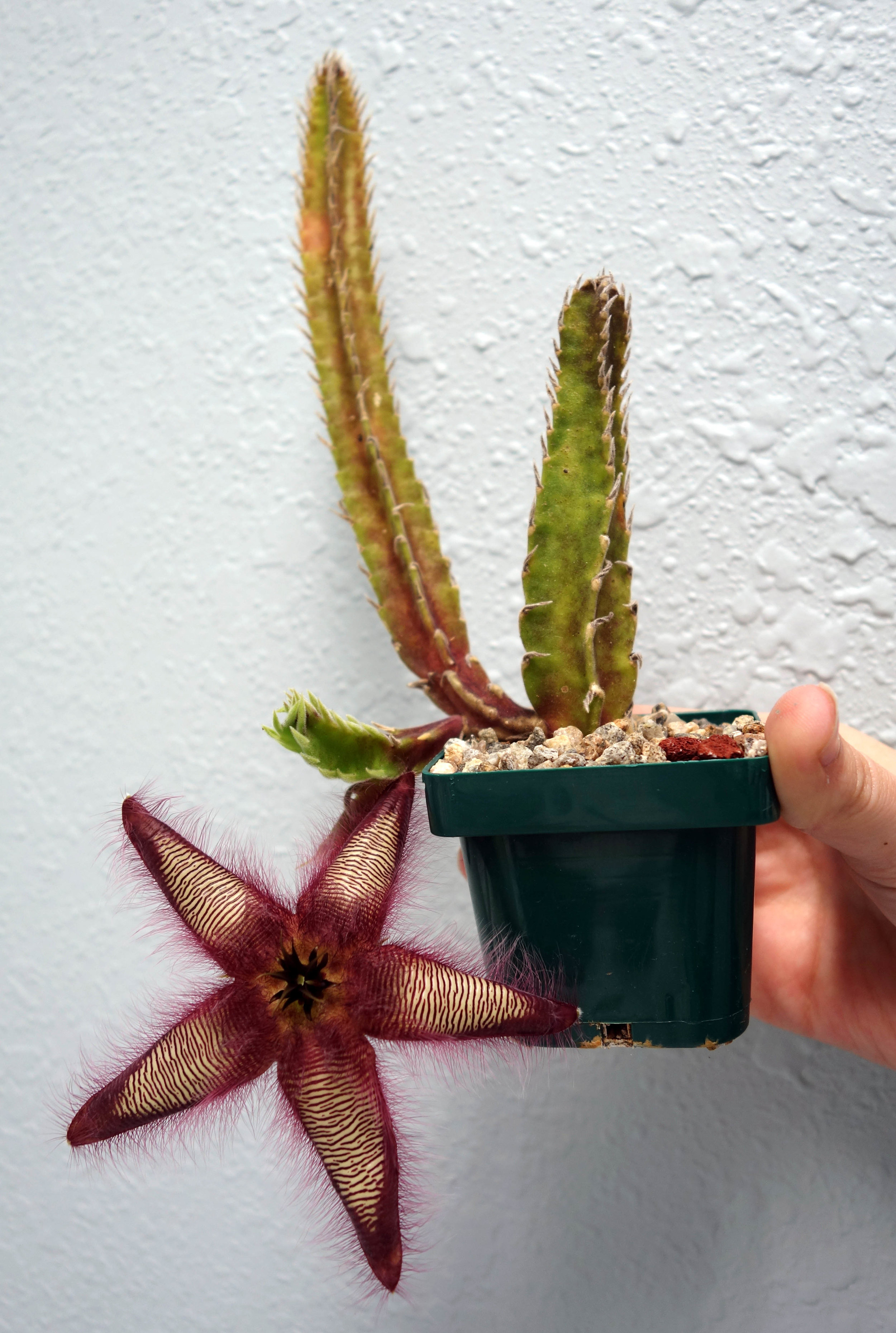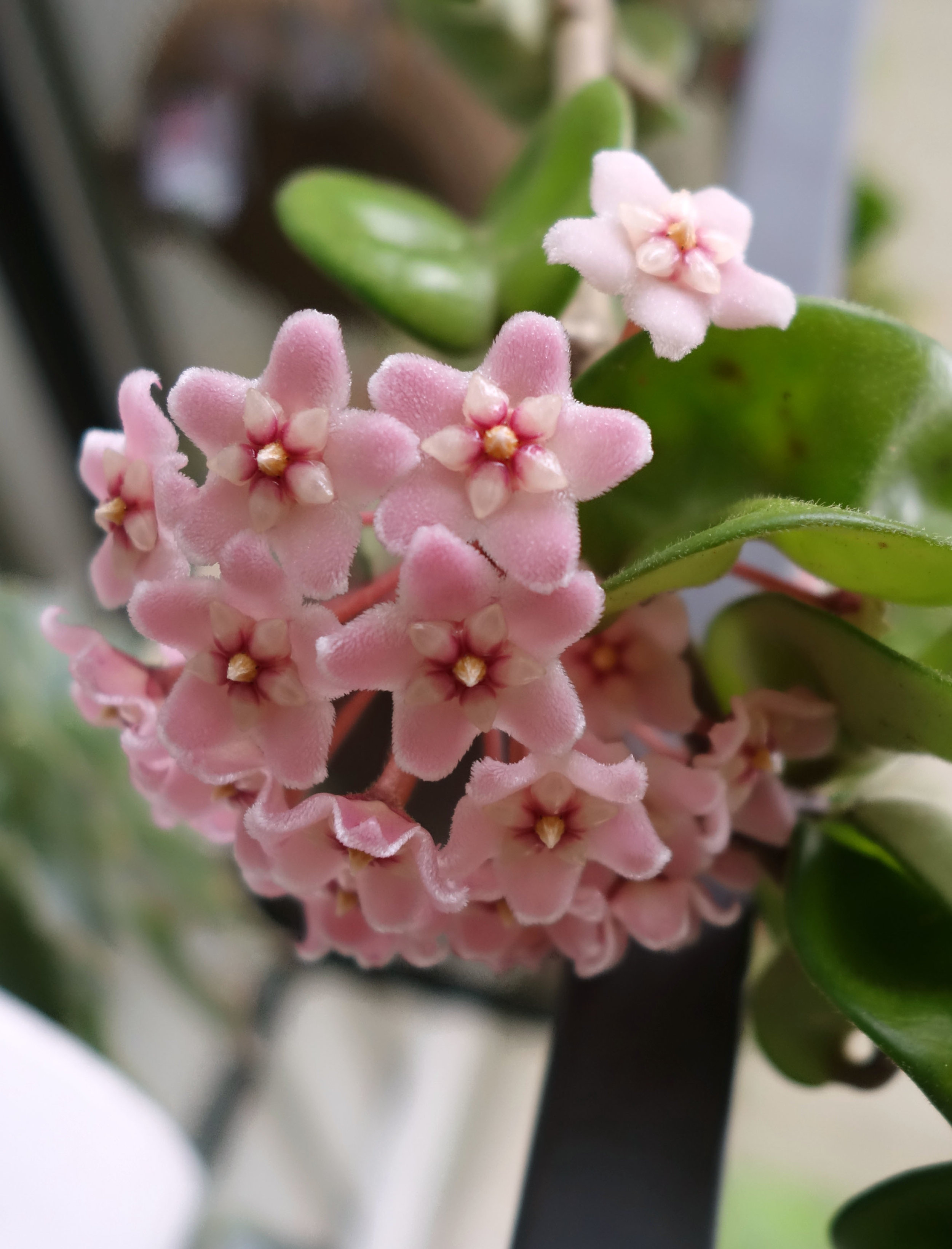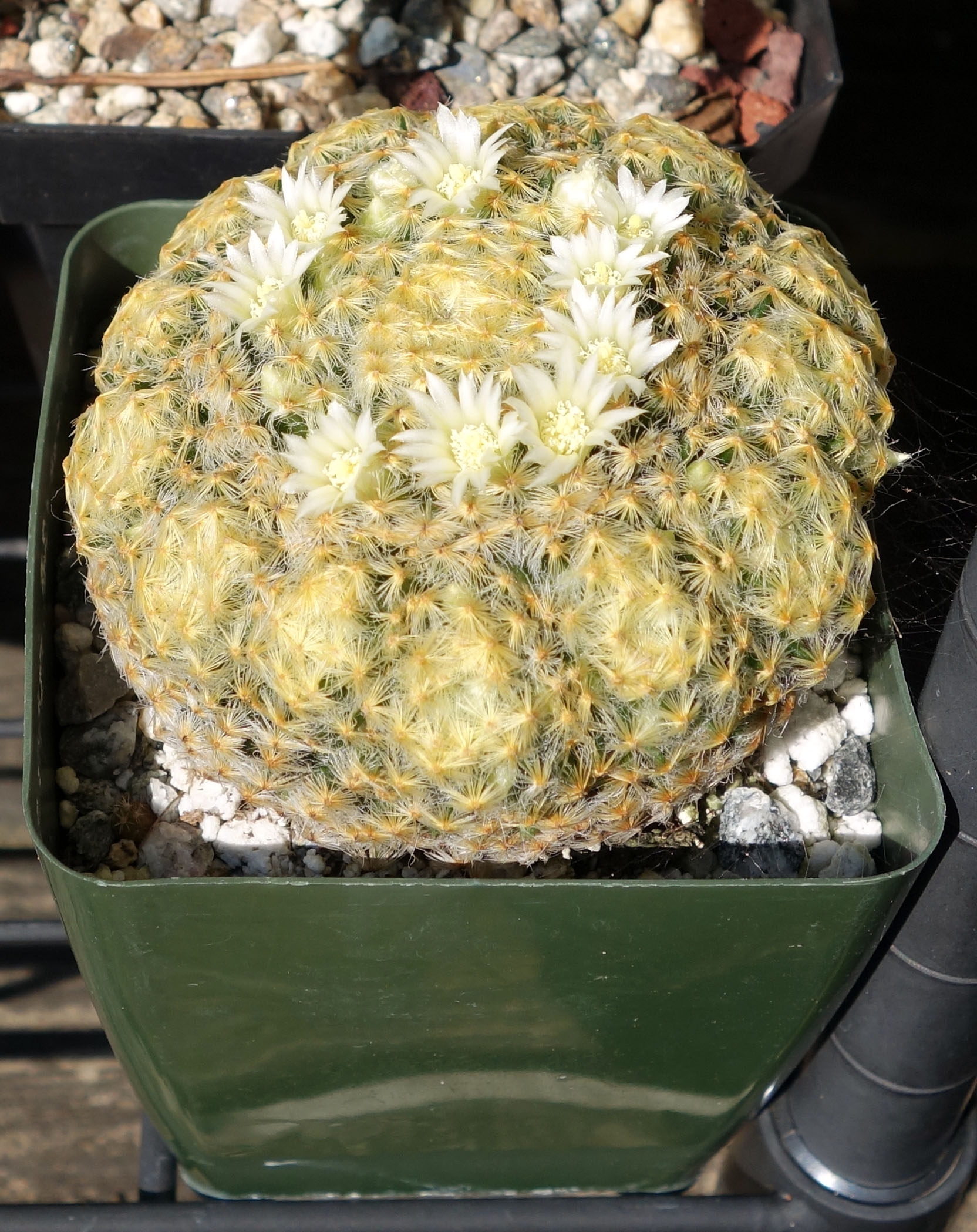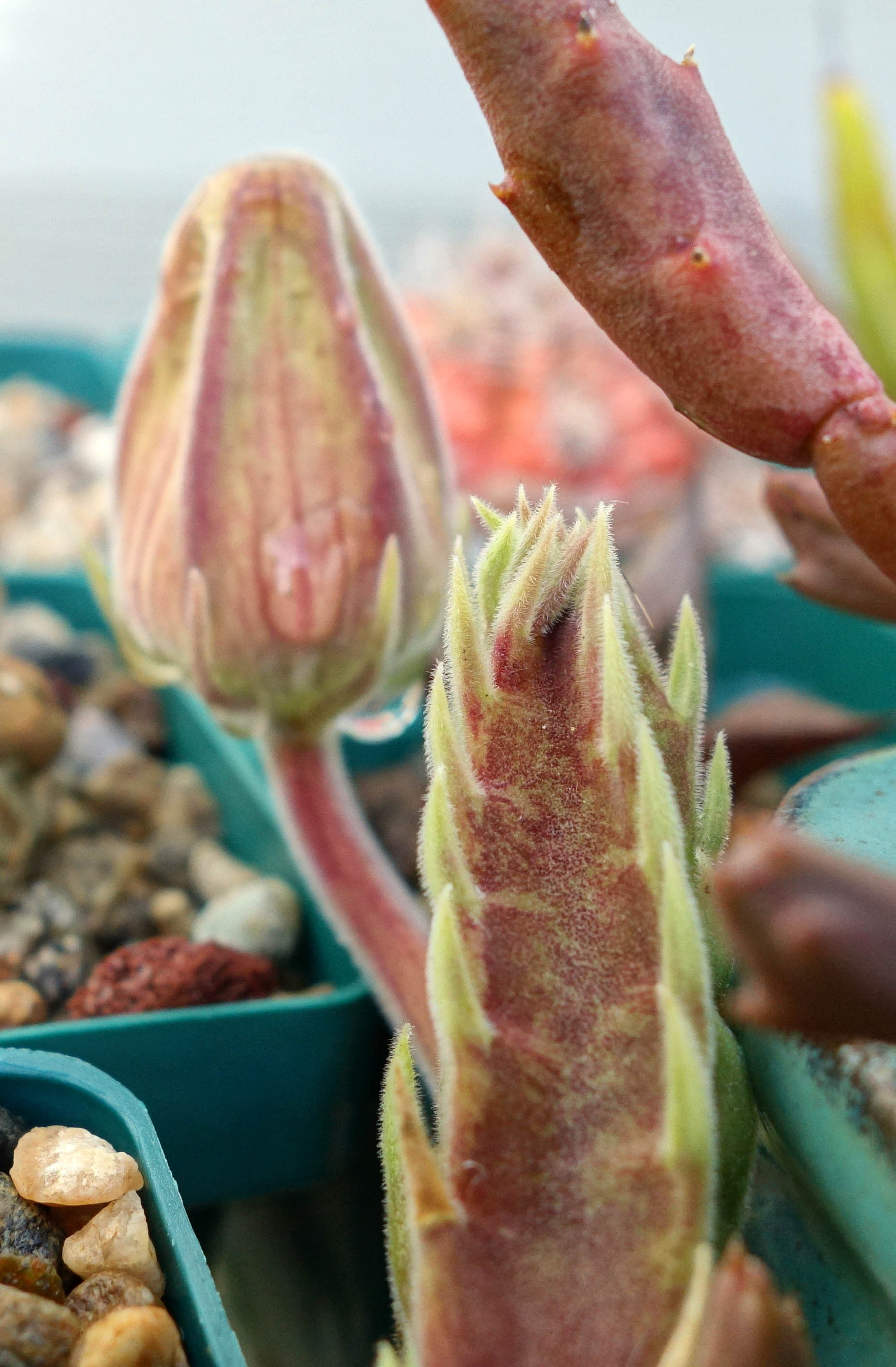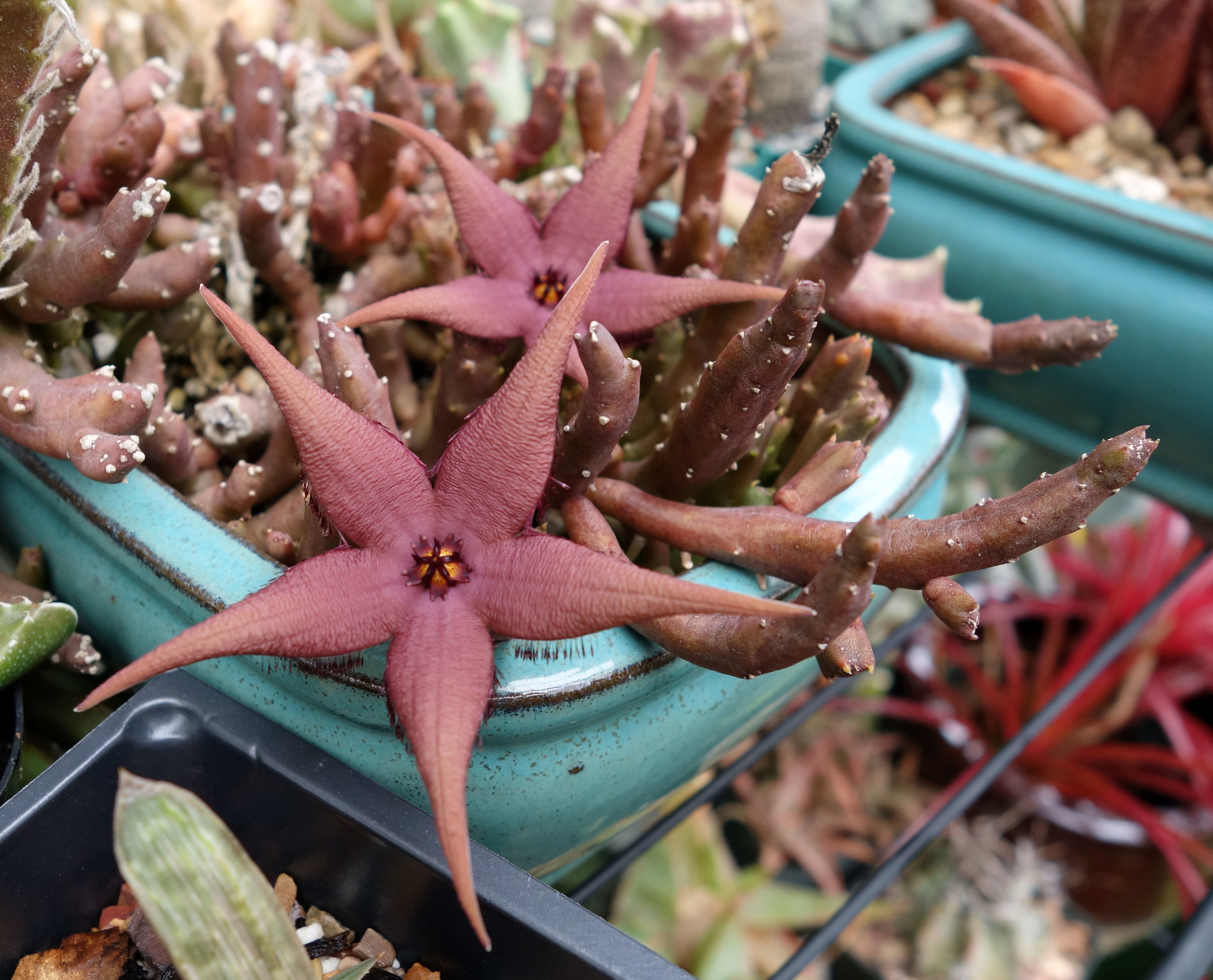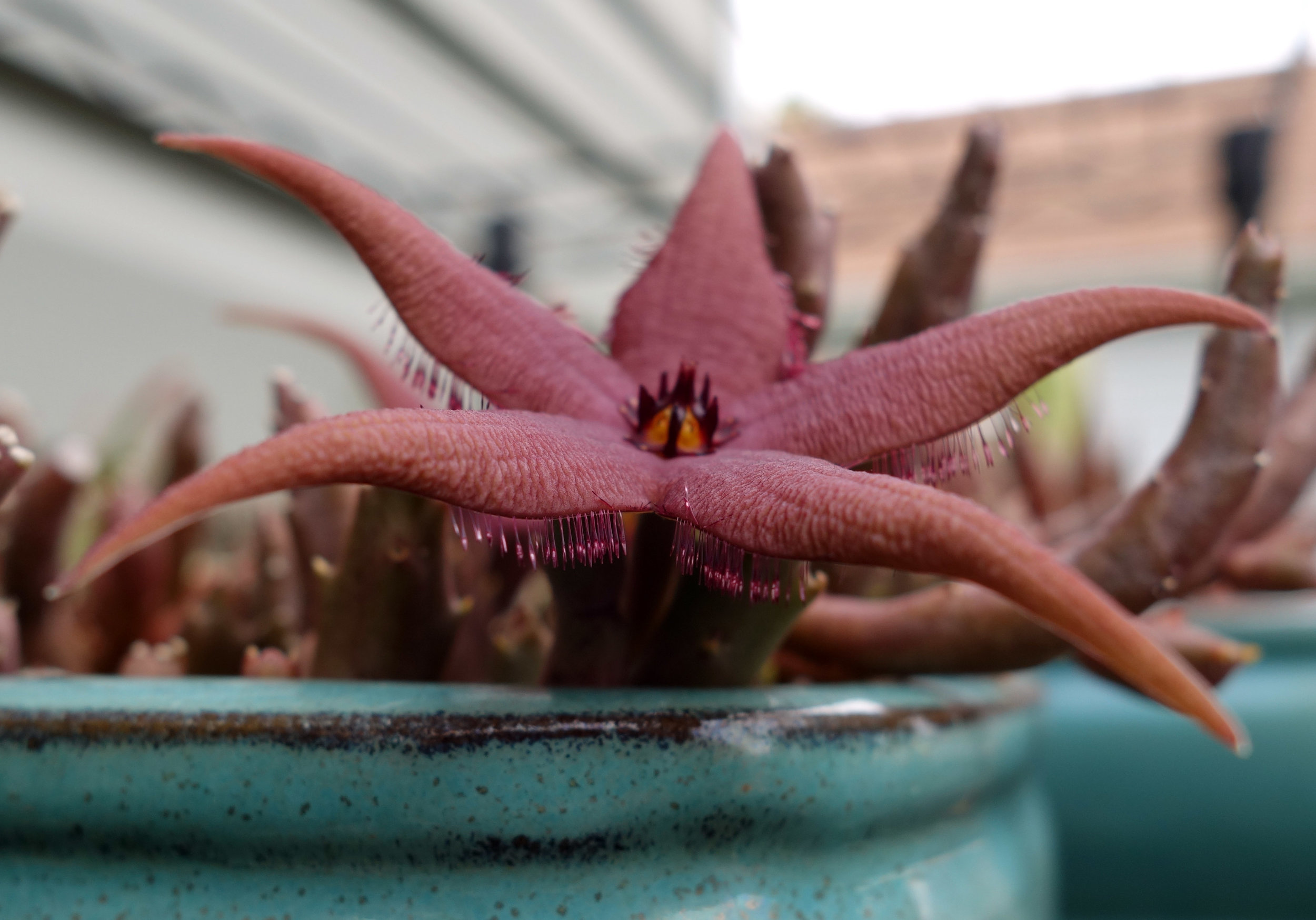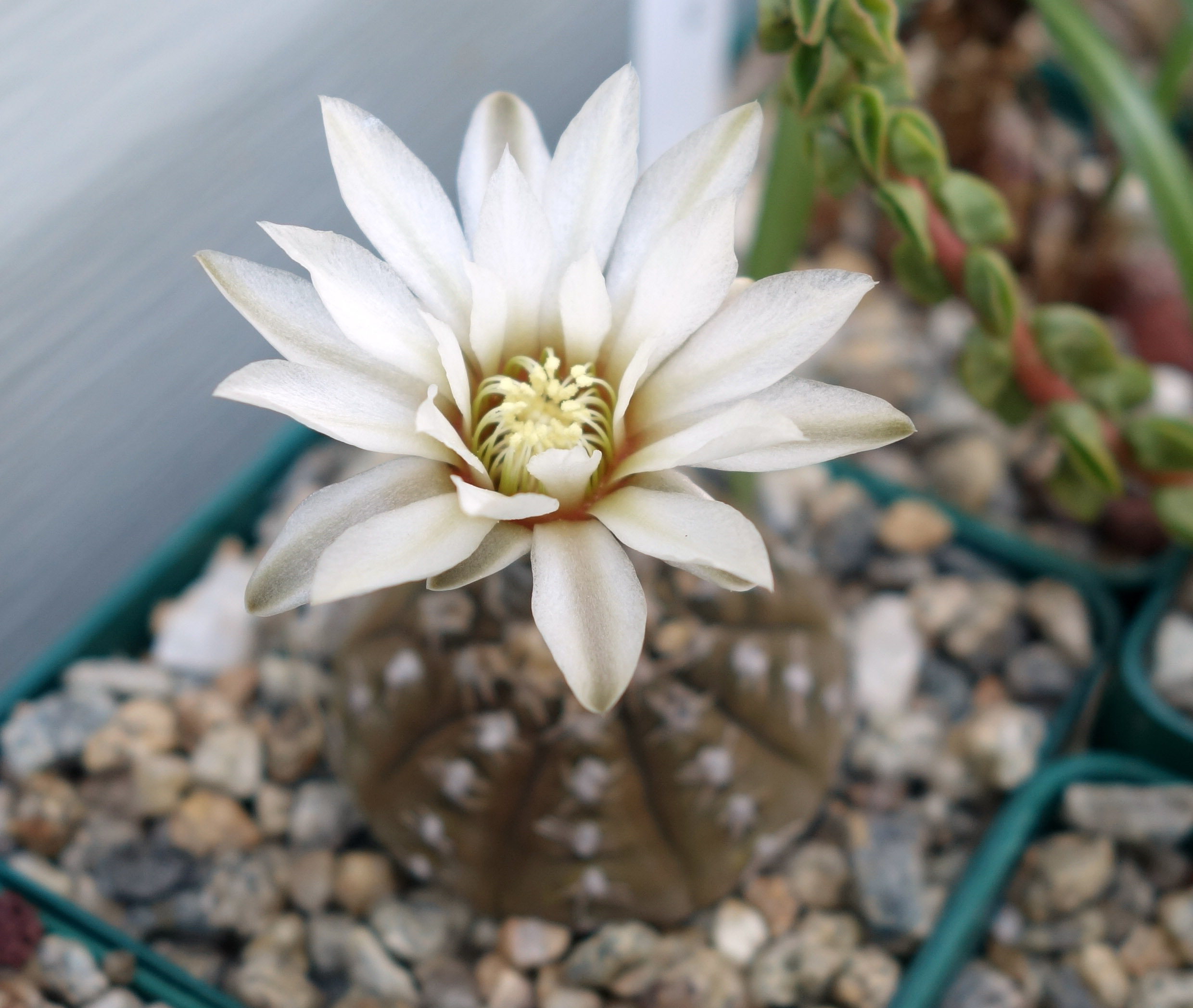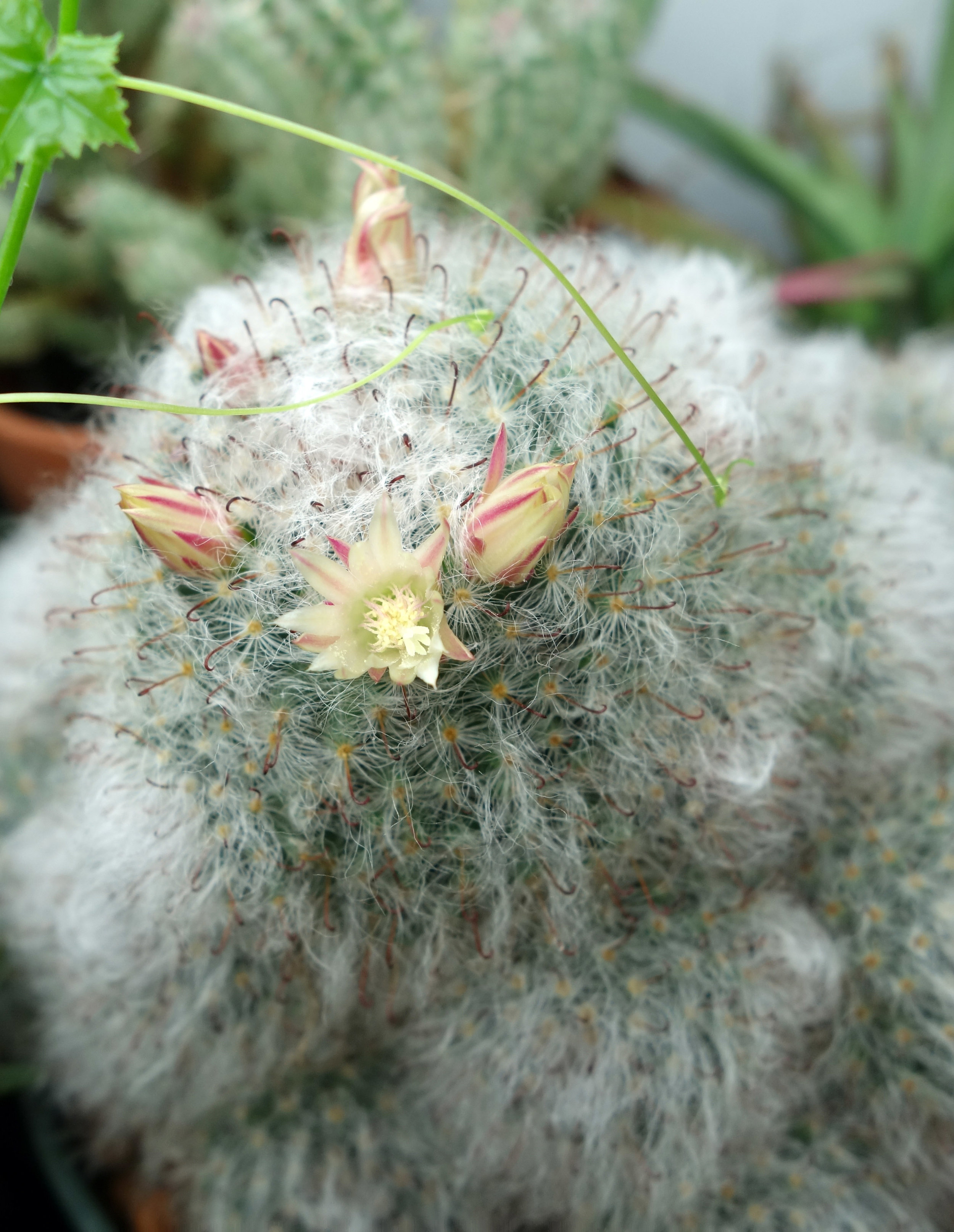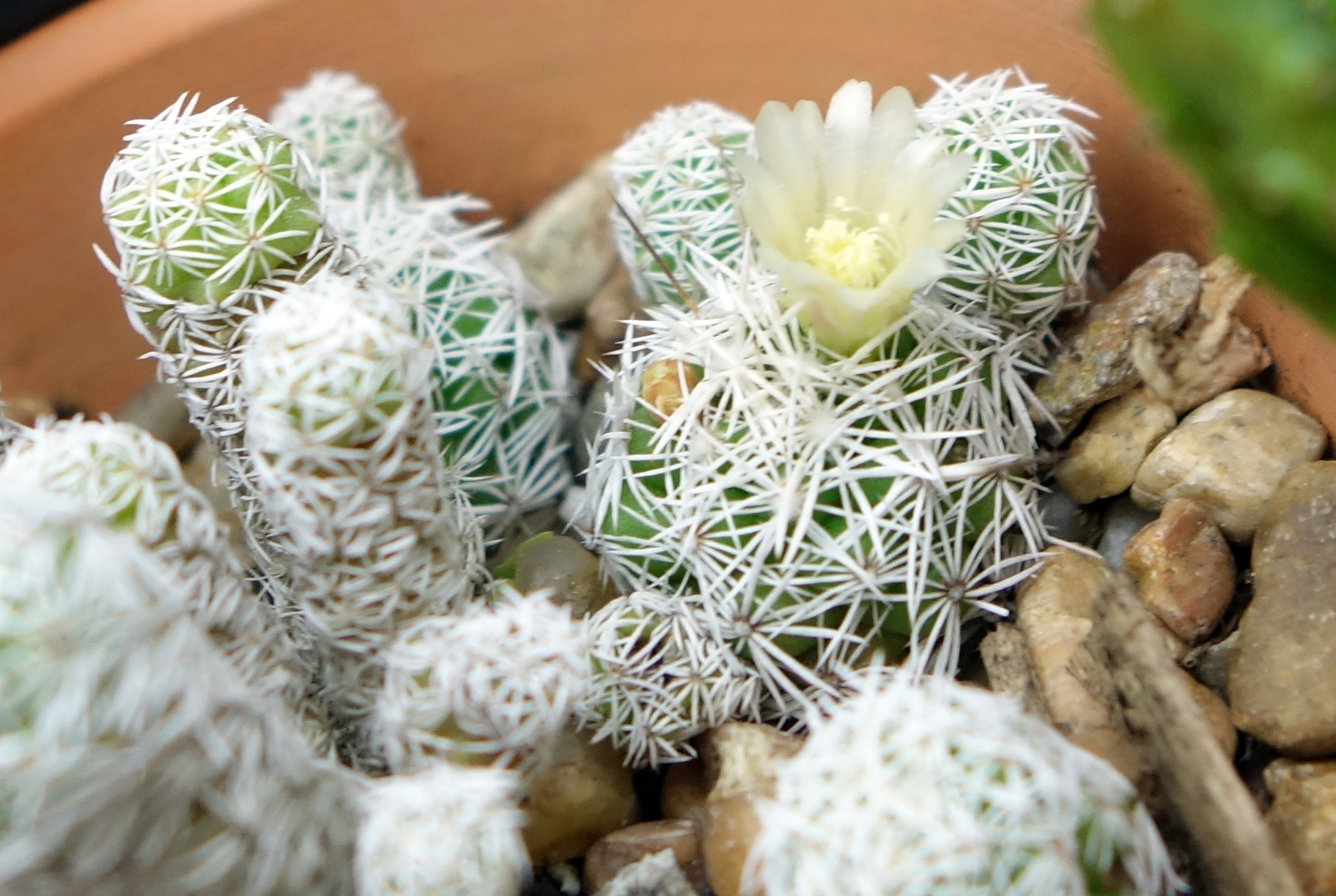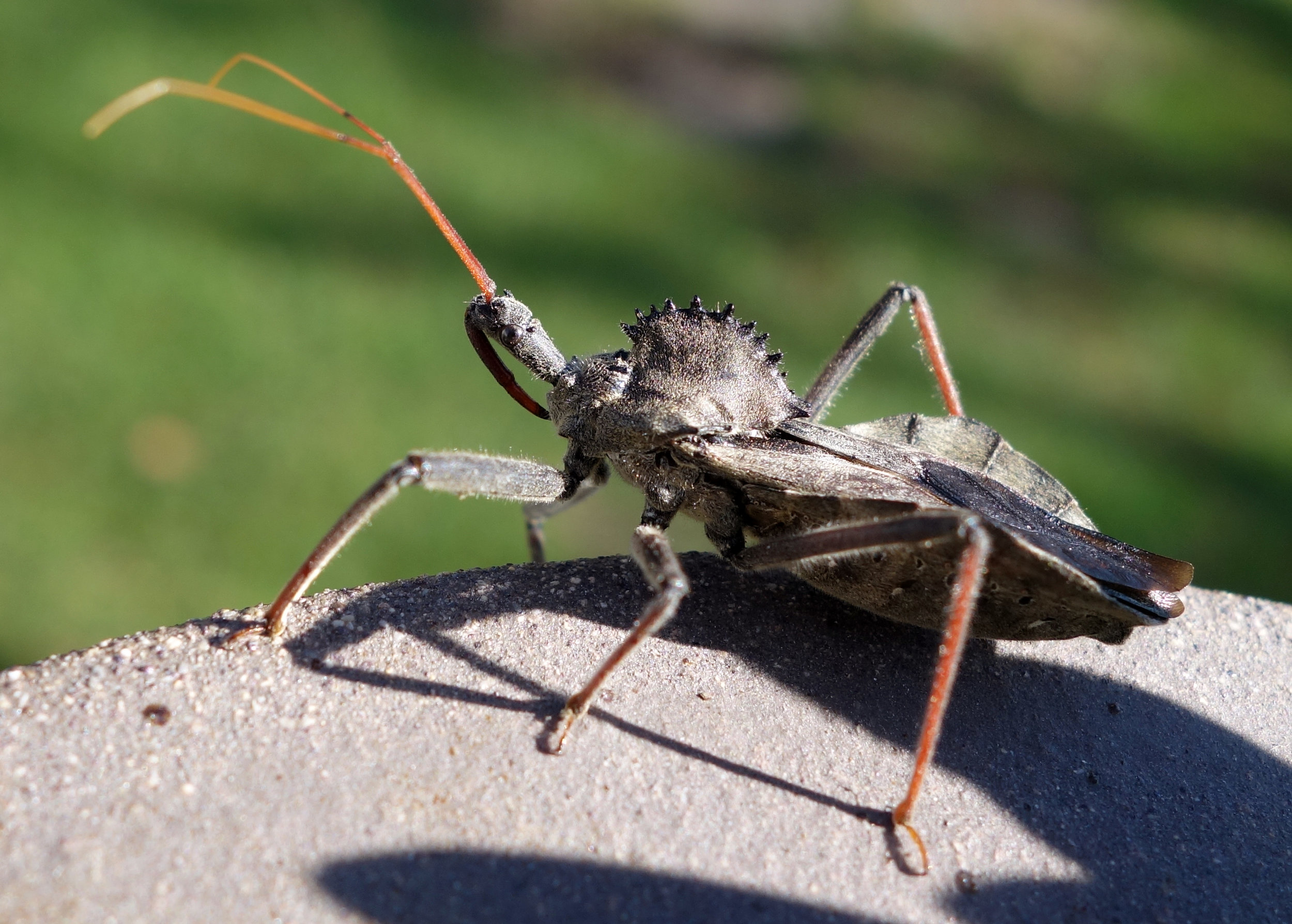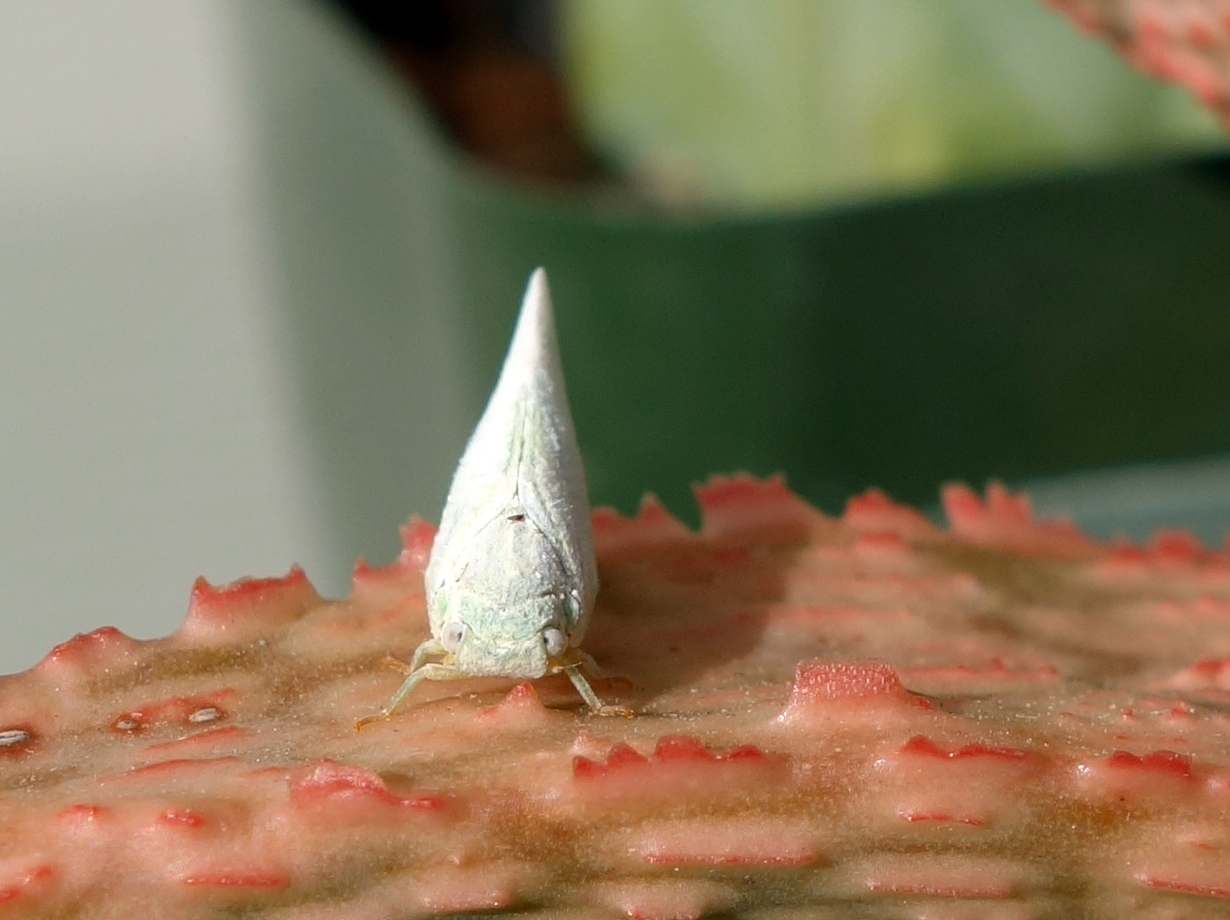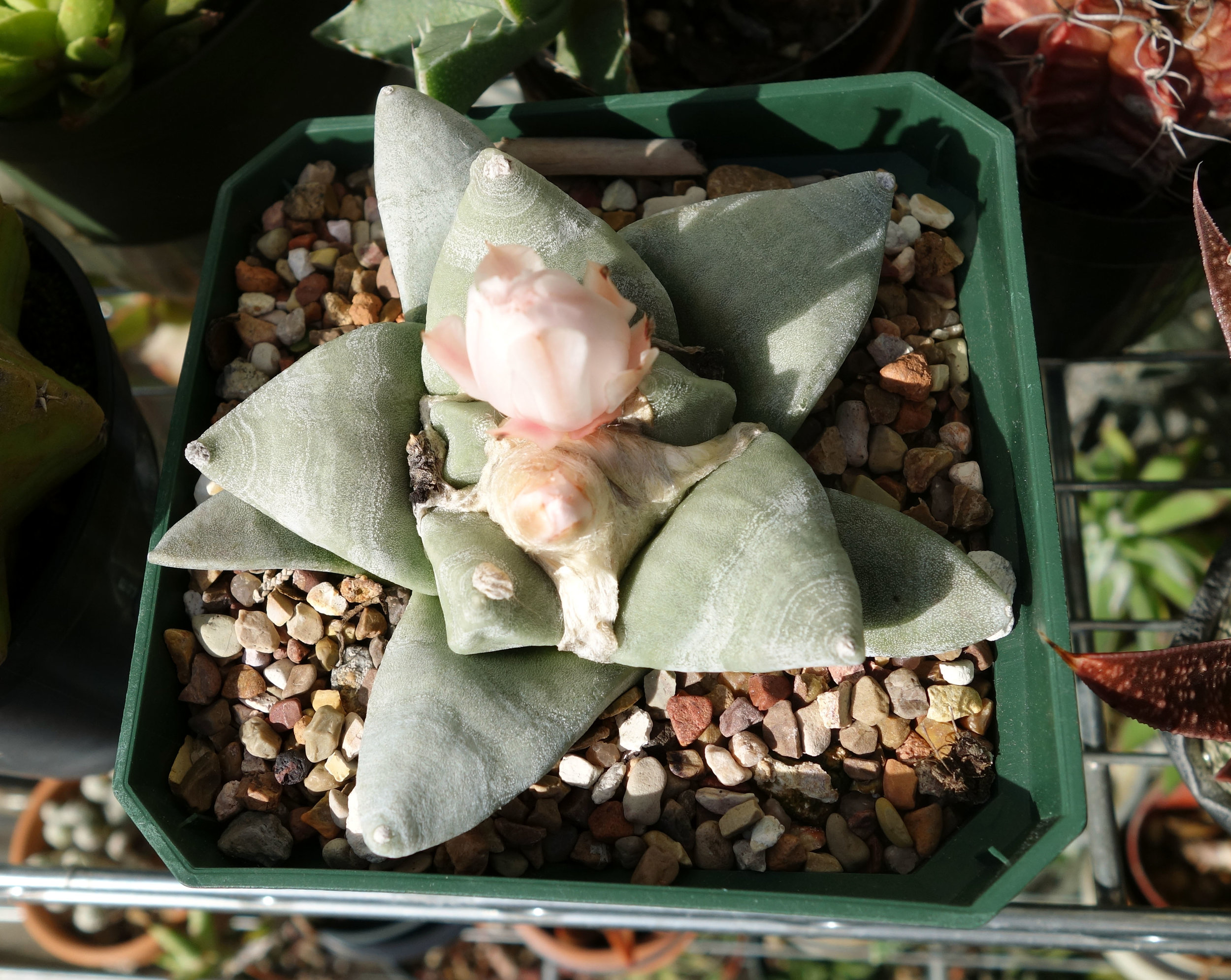Someone asked me the other day what my favorite, presently owned plant is. I honestly don't know. I imagine most people who have reached the stage where they own over a hundred plants would have a very difficult time answering this question; that's part of the reason why they own over a hundred plants! I can narrow down my favorites into an only moderately long list, though. This is in no particular order, other than me thinking about wandering through my house, porches, and office and what's in each of those spaces.
- Polypodium formosanum 'Cristatum' "E. T. Fern"
This plant is my favorite fern. Hands down. It's surprising, because I don't know that I can categorize other types this broadly - I don't have a definitive favorite cactus, for instance - but ferns are tricky for me to keep properly. I'm too lazy to provide the proper care requirements (constant watering and higher humidity being the main problems) and while in my care ferns often are either in a state of slow (or quick) decline. Not E. T. Fern, however! This plant is the only fern I've ever kept that puts up with my drier conditions and still stays lush. It is the most easy-going fern I've met, which is lucky, as I've only ever seen the one plant (that I own) for sale so if I killed it I'd be hard pressed to find another. (I also briefly saw a smaller plant for sale on eBay and my mother snapped it up and when I idly looked again some time later there were no others available.) It's also a footed fern, which is an aesthetic I really enjoy in a fern, and the fronds are very soft and have a pleasing form. This is also probably my favorite of all the plants that spend year-round indoors with me.
- Sansevieria masoniana "Whale Fin" or "Mason's Congo"
My Sansevieria masoniana is the largest plant I own. It's beautiful in a way I didn't know Sansevieria could be due to the off-putting oversaturation of S. trifasciata laurentii (though I now also have a number of other Sansevieria species that I enjoy aesthetically like S. cylindrica). I've read that this species typically takes a really long time to send off new leaves; this is completely untrue of my plant. I have had to cut pots off of mine because it sent off new leaves faster than I'd planned for and warped the pot around its rootball. Repeatedly. But there's something pleasing about such a happy houseplant and its mottled, red bordered leaves are really gorgeous. I love my other Sansevieria, but this is my favorite of the genus.
- Senecio jacobsenii "Trailing Jade"
I do not get along with actual Crassula ovata jade plants (I know, I know, even black thumbs seem to get along with them) or a lot of other species within the Crassula genus, which is perhaps why I like Senecio jacobsenii so much. We jive. I also genuinely aesthetically prefer the trailing habit to the bushy style of Crassula ovata so it feels like I'm extra winning.
- Sedum morganianum "Burro's Tail"
My affection for this sedum in part stems from the fact that my beautiful, lush plant grew entirely from one small stem segment I picked up off the floor almost ten years ago in a grocery store in Queens and which was given to me for free by the cashier. Slowly, slowly, slowly, slowly, slowly, then all of a sudden quickly, this little stem grew into a truly enviable specimen. I also have the rarer version that has pointed leaf tips as opposed to rounded ones. I aesthetically prefer the points, and I also like knowing it's a rarer form because I'm petty that way.
- Selenicereus chrysocardium "Fern Leaf Cactus"
This plant was also one that I grew out; I bought an unrooted cutting from a man at an antiques store, and it took ages to grow into something attractive. In fact, it was only this year that it came into its own. Nevertheless, it finally has and I think it's really lovely. I have a couple Epiphyllum spp. cacti that occupy a similar visual (and functional) niche, but of the flattened cactus-reverted-to-tropical genre, this is the most spectacular.
- xNeophytum sp. (possibly 'Firecracker')
I am enamored of this plant. Its bright red coloration year-round is spectacular and it's relatively easy-going to boot. I think this is my favorite bromeliad (and I have a number of bromeliads).
- Copiapoa hypogaea
This is just a very aesthetically appealing little cactus to me. It also seems to enjoy living with me, which it demonstrates by flowering and not rotting or etoliating or catching any pests or fungal infections.
- Ariocarpus retusus var. furfuraceus
I haven't owned this plant for overly long, so I suppose I may change my mind, but I'm currently really into it. I enjoy its form as is, but it's a real stunner when in flower, and unlike some cacti (ahem, Echinopsis subdenudata 'Domino', I'm looking at you), the flowers last long enough to really appreciate them.
- Ibervillea lindheimeri
This is a lovely caudiciform as it's also a vine, so it grows rapidly yet in a relatively unobstructive way toward light and is therefore probably my most flexible houseplant in terms of indoor positioning.
It's hard to call out only one species of these genera, so the whole genus will have to do:
- Mammillaria spp.
While I've rotted out a number of Mamms in my time, we seem to have struck an accord of late and I'm a sucker for silken-haired cacti like M. hahniana or M. plumosa.
- Pachypodium spp.
Combining the best aesthetic aspects of cacti and palm trees, these plants are like miniature oases in and of themselves.
- Euphorbia spp.
Despite the toxic sap, I enjoy the alien yet varied forms these plants take on.
- Stapeliad spp.
I'm actually more reactive to their sap than Euphorbia sap, but I've been getting really into these lately. I think part of it is that due to my anosmia I feel an affinity for stink flowers since scent never enhances or detracts from my opinion of plants anyway, while another part is that species like Caralluma look so soft and squidgy in the best of ways.
- Gymnocalycium spp.
Gymnos are so easy that they can be almost overly unchallenging, but man, it's hard to gripe at cacti that regularly flower, don't rot, and don't quickly etoliate. These were the first cacti I had real success with and are probably to be credited with deepening my interest in keeping cacti early on when I didn't have access to the best light conditions.
- Aloe spp., Gasteria spp., Haworthia spp.
Honestly, all three of these (and their numerous crosses), hit the same sweet spot for me in terms of care requirements and aesthetics.
- Agave spp.
To me, these are like aloe with a bit more metal in them.
- Rhipsalis spp.
Soft cacti that straddle the line between tropical and succulent speak my language.
So there it is. For someone who has as many plants as I do, that's actually quite a narrowing down! I left off perfectly good species and genera that I keep and enjoy like Homalomena 'Emerald Gem', Phalaenopsis "Moth Orchids", Aglaonema "Chinese Evergreens", Saintpaulia "African Violets", Paphiopedilum "Lady Slipper Orchids", Echeveria, Tillandsia "Air Plants", Hoya, Philodendron, Ledebouria, Mesembs, Anacampseros, Sempervivum, and so many more (including a ton of cactus species), so don't tell me I didn't winnow.
I can also tell you the plants are on my never-again list: Opuntia spp. and all other glochid-bearing cacti. I fervently hate glochids. I will take firm spines or toxic sap any day over hundreds of nearly invisible, easily detached, reverse-barbed stabby hairs. It's like the difference between bees and wasps - bees are defensive stingers; wasps are aggressive jerks that seek out trouble. Glochids are the wasps of the cactus world and I will not invite them into my home no matter how aesthetically pleasing the plant that carries them is.
Though they aren't necessarily perma-banned like glochid-bearing cacti, I also tend to avoid Selaginella spp. due to its rabid desire for water, Crassula and Kalanchoe spp. (with a couple tentative exceptions) and annuals due to my own disinterest in plants that die no matter what I do, and larger plants like many Ficus spp. pretty much solely due to my limited and already overtaxed space. It may also be of note that since one factor in my favorites and not-favorites depends on what thrives for me which changes due to local climate, some plants I enjoyed more in Baton Rouge aren't on the list now that I'm in Leavenworth. That's the thing about favorites, though - they come and go depending both on historical performance as well as present conditions, and can also be usurped by a relative newcomer who nevertheless outperforms admirably! So when I make this list again in a few years, it'll be interesting to see what stays, what goes, and what takes the place of the jettisoned.











